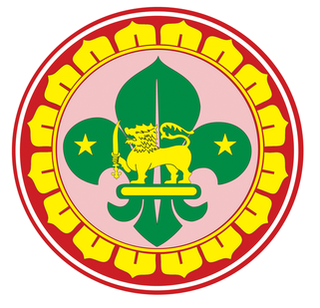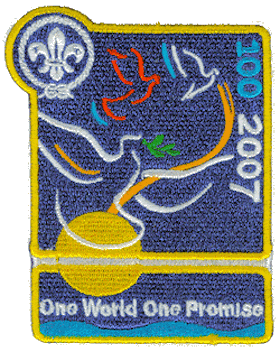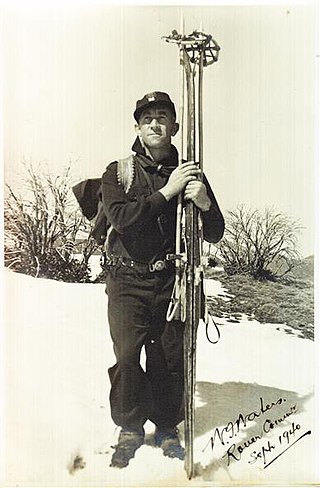
Sutton Park NNR is a large urban park located in Sutton Coldfield, Birmingham, West Midlands, England. The park is a National Nature Reserve; large parts are also a Scheduled Ancient Monument. Sutton Park is one of the largest urban parks in the United Kingdom. The park covers more than 2,200 acres (900 ha) according to one source. It consists of a mix of heathland, wetlands and marshes, seven lakes, extensive ancient woodlands, several restaurants, a private 18-hole golf course on its western edge and a municipal golf course to the south, a donkey sanctuary, children's playgrounds and a Visitor Centre. There is no entrance charge to the Park. A wide range of leisure activities are undertaken in the park including dog walking, pony trekking, bike riding and kite flying and there are areas to fly model aeroplanes and helicopters. Additionally, a railway line runs through the park.

Gilwell Park is The Scout Association's principal camp site and activity centre in the United Kingdom. It is a 109-acre (44 ha) site, located in East London in the Sewardstonebury area of Waltham Abbey within Epping Forest near the border with Chingford. It is used by Scout and Guide groups. Adult Scout leader training undertaken at Gilwell Park since 1919 is known as Wood Badge training. Scout leaders from many countries have trained at Gilwell Park and Wood Badge training was followed by some other Scout organisations, and, therefore, Gilwell Park has taken on importance to other Scout organisations.

In Scouting, a jamboree is a large gathering of Scouts and/or Girl Guides who rally at a national or international level.

The Scout Association of Hong Kong is the largest scouting organisation in Hong Kong. Scout training was first introduced in Hong Kong by Rev Spink of St Andrew's Church, Kowloon in 1909 and 1910 by the Protestant based Boys' Brigade, Chums Scout Patrols and British Boy Scouts. The Catholic St. Joseph's College, formed its Boy Scout Troop in 1913, and registered with the Boy Scouts Association of the United Kingdom in 1914. The Boy Scouts Association formed its Hong Kong Local Association in July 1915 which became its Hong Kong Branch. After changes to the name of the United Kingdom organisation in 1967, the branch name was changed to The Scout Association Hong Kong Branch. In 1977, The Scout Association of Hong Kong was constituted as an autonomous association and successor to The Scout Association's Hong Kong Branch and became the 111th member of the World Organization of the Scout Movement (WOSM) in 1977.

Gilwell Campsite a major campsite run by the Scout Association of Hong Kong for wild camping and other scouting activities in the Kowloon Peak area in New Kowloon, Hong Kong The campsite is near MacLehose Trail with road access through an unnamed road that joins with Fei Ngo Shan Road. Its altitude is 430 m (1,410 ft) above sea level. A few minutes walk from the site, there are viewpoints over Kowloon, the Victoria Harbour and Hong Kong Island. The campsite is managed by Kowloon Region. The campsite is located within the boundaries of Sha Tin District, very close to its borders with Wong Tai Sin District and Sai Kung District, and much closer to Tung Yeung Shan rather than the summit of Kowloon Peak, which is about 1.7 kilometres (1.1 mi) to the south.

Estonian Scout Association is the primary national Scouting organization of Estonia, became a member of the World Organization of the Scout Movement in 1996. The coeducational Eesti Skautide Ühing has 1,337 members as of 2011.

The Sri Lanka Scout Association, is a Scouting organization in Sri Lanka operated by the Ceylon Scout Council. The Ceylon Scout Council is a corporation formed by Act No. 13 of 1957. The association became a member of the World Organization of the Scout Movement in 1953. The coeducational Sri Lanka Scout Association has 33,709 members as of 2014. in 2016 the year that the National Organisation reached 104 years the Scouting Population in Sri Lanka had increased to 55,078 the growth taking place against the year 2015 was 29% which was a great achievement by the SLSA.

The World Scout Indabas were gatherings of Scout Leaders from around the world, held in 1952, 1957 and 1960.
Scouting started in Victoria, Australia, as early as 1907 and local Boy Scout patrols and troops formed independently. Several separate central organisations began operating including Boys' Brigade Scouts, Church Lads' Brigade Scouts, Chums Scouts, Imperial Boy Scouts, Girl Peace Scouts, Imperial Boy Scouts Victoria Section, Imperial Boy Scouts Victorian Section, Gippsland Boy Scouts Association, Australian Boy Scouts, Australian Imperial Boy Scouts, The Boy Scouts Association, Life-Saving Scouts of the Salvation Army and Methodist Boy Scouts.

The 21st World Scout Jamboree was held in July and August 2007 and formed a part of the Scouting 2007 Centenary celebrations of the world Scout Movement. The event was hosted by the United Kingdom, as 2007 marked the 100th anniversary of the founding of Scouting on Brownsea Island.

The Scouting 2007 Centenary comprised celebrations around the world in which Scouts celebrated 100 years of the world Scout movement. The original celebrations were focused on the United Kingdom, such as the camp on Brownsea Island, the birthplace of Scouting, and the 21st World Scout Jamboree in Chelmsford, Essex.

Brownsea Island Scout camp, is a historic Scout campsite on Brownsea Island in Poole Harbour in southern England, which was the site of Robert Baden-Powell's 1907 experimental camp for boys to test ideas for his book Scouting for Boys, which led to the rapid growth of the Scout movement. Boys from different social backgrounds participated from 1 to 8 August 1907 in activities around camping, observation, woodcraft, chivalry, lifesaving and patriotism.

The 3rd World Scout Jamboree was held in 1929 at Arrowe Park in Upton, near Birkenhead, Wirral, United Kingdom. As it was commemorating the 21st birthday of Scouting for Boys and the Scouting movement, it is also known as the Coming of Age Jamboree. With about 30,000 Scouts and over 300,000 visitors attending, this jamboree was the largest jamboree so far.

Scouting in the region of Greater London is largely represented by The Scout Association of the United Kingdom and some Groups of traditional Scouting including the Baden-Powell Scouts' Association.

Scouting in North East England refers to Scouting in the official region of North East England. It is largely represented by the Scout Association of the United Kingdom and some groups of traditional Scouting, including the Baden-Powell Scouts' Association, and the European Scout Federation.

Scouting in West Midlands provides an overview of Scouting activities in the governmental region of the West Midlands. The largest number of Scouts and volunteer leaders in the region is linked to the Scout Association of the United Kingdom, while there is also a presence of traditional Scouting groups, such as the Baden-Powell Scouts' Association. The Scout Association administers the region through 8 Scout Counties, overseen by a regional commissioner, which follow the boundaries of the ceremonial counties they exist within. There are also a number of Scouting clubs within Universities in the region which are affiliated to the Student Scout and Guide Organisation.

Scouting in East of England is about Scouting in the official region of East of England. It is largely represented by The Scout Association of the United Kingdom and some Groups of traditional Scouting including the Baden-Powell Scouts' Association.

Jamboree 2008 was developed as "an Inter-organisational & International event" which was intended to "bring 600 young people from Scouting and Guiding together — to develop skills & friendships that will lay the foundations for the next 100 years of Scouting". The Jamboree was set up to be independent of Associations, and hoped to involve members of the World Federation of Independent Scouts (WFIS), the World Organization of the Scout Movement (WOSM), and the World Association of Girl Guides and Girl Scouts (WAGGGS).

William Francis "Bill" Waters was Scouts Victoria's Headquarters Commissioner for Rover Scouts between 1930 and 1965.

Lake View Park International Scout Centre , is a scout campsite, Scout Activity Centre, training and conference centre for Scouting groups, which belongs to the 1st Kandy Dharmaraja Scout Group. This 57-acre site is located in Kandy, Sri Lanka.



























